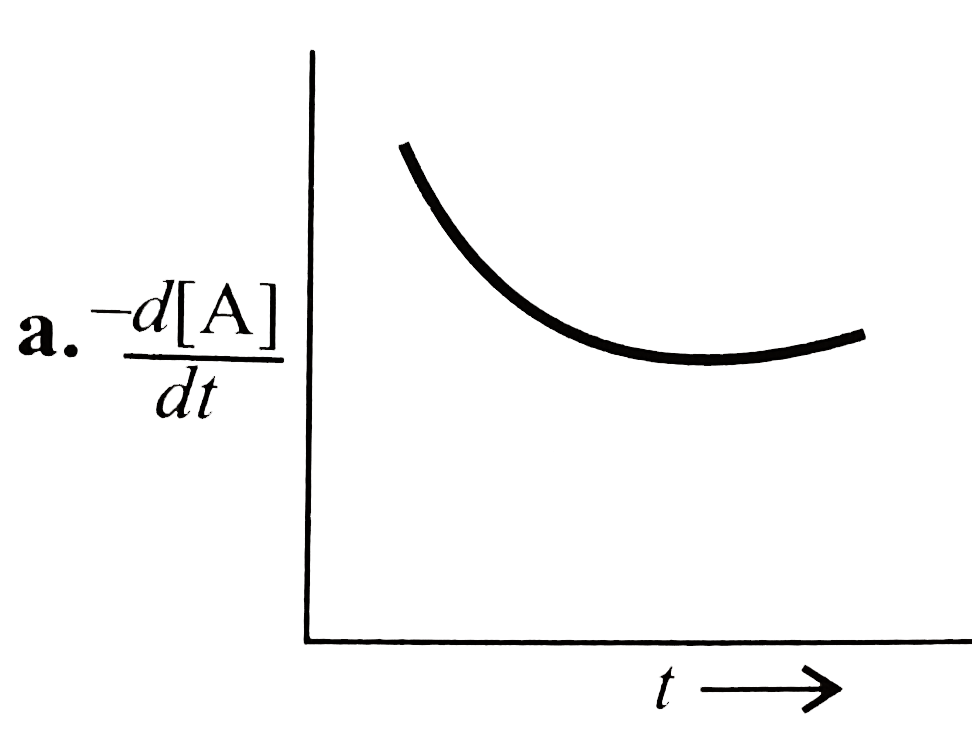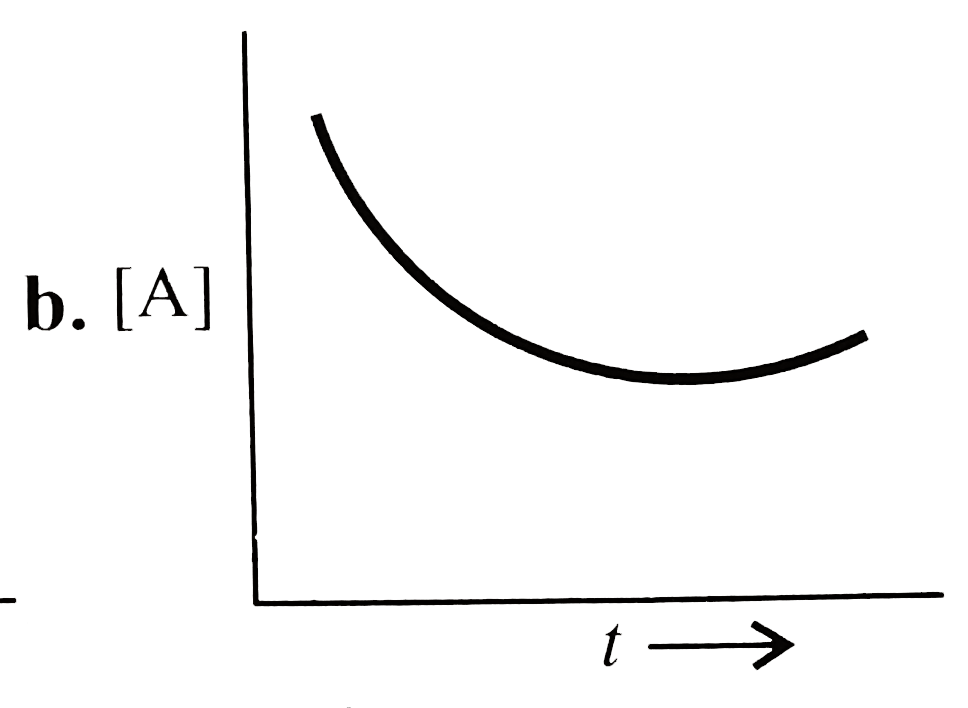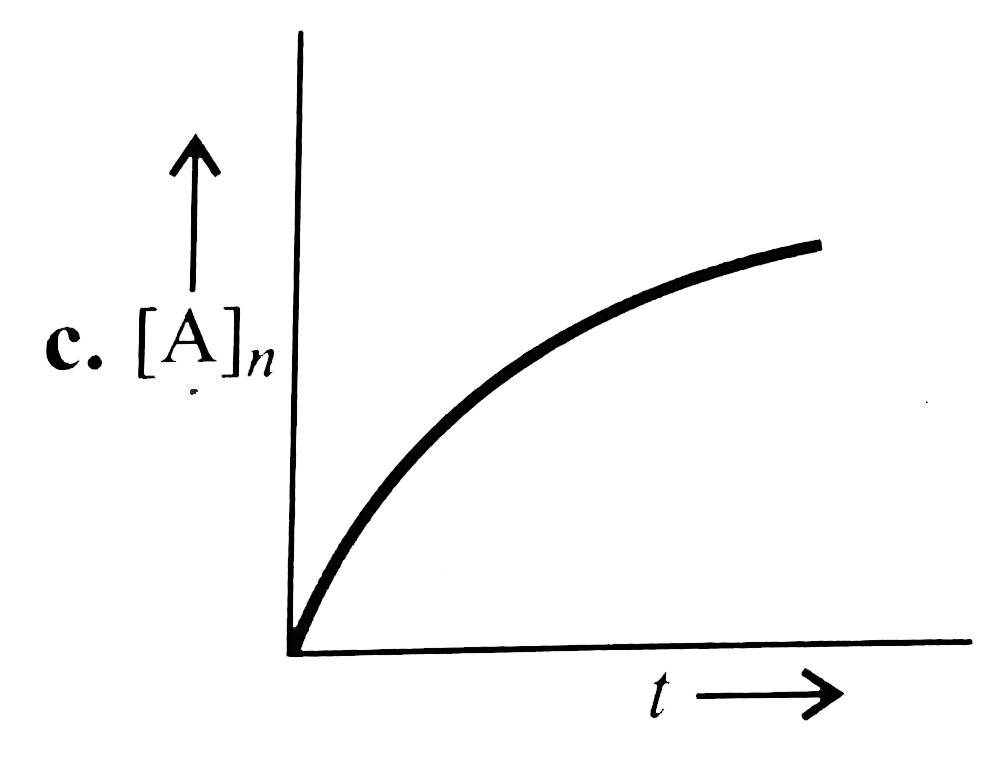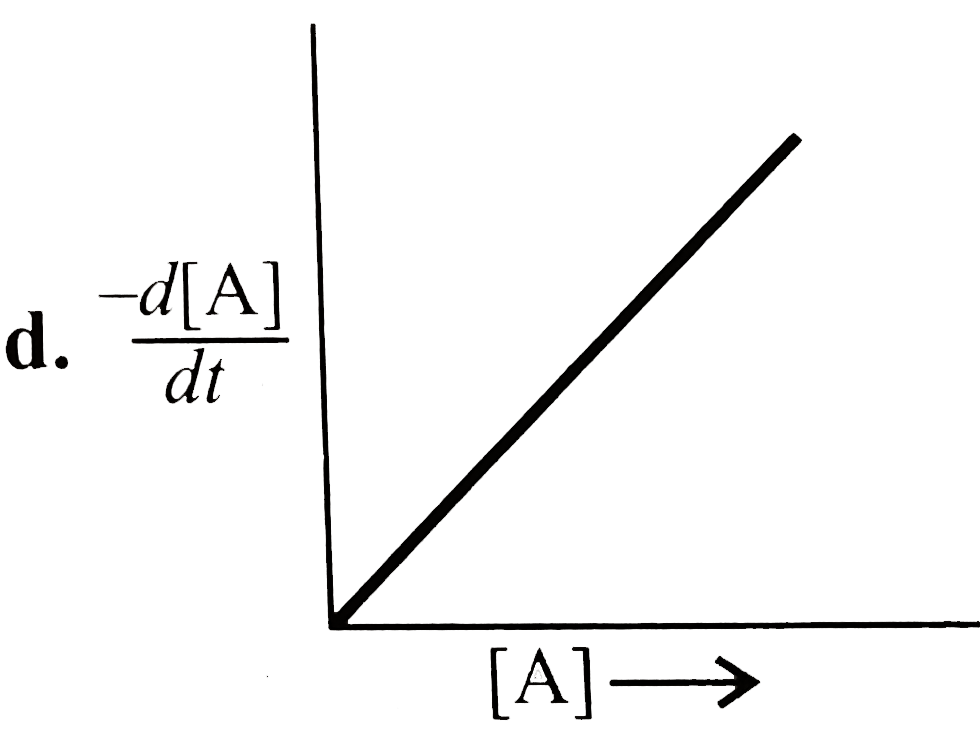Which of the following plots are correctly made for the reaction nA⇔(A)n if it obeys first order reaction?




The correct Answer is:A, B, C, D
To determine which plots are correctly made for the reaction nA⇌(A)n that obeys first-order kinetics, we need to analyze the behavior of the concentration of reactants and products over time, as well as the rate of reaction.
Step 1: Understand the Reaction and Rate Law
The reaction given is nA⇌(A)n. For a first-order reaction, the rate law can be expressed as:
−d(A)dt=k(A)
where (A) is the concentration of reactant A and k is the rate constant.
Step 2: Analyze the Rate of Reaction
As the reaction proceeds, the concentration of A decreases over time. Since the rate of reaction is directly proportional to the concentration of A, as (A) decreases, the rate of reaction also decreases.
- Conclusion for Plot A: The plot showing the rate of reaction decreasing with time is correct.
Step 3: Concentration of Reactant Over Time
Since A is being converted into products, the concentration of A will decrease over time.
- Conclusion for Plot B: The plot showing the concentration of A decreasing with time is correct.
Step 4: Concentration of Product Over Time
As A is converted into products, the concentration of the product (A)n will increase over time. Initially, the concentration of the product is zero, and as time approaches infinity, the concentration of A approaches zero, while the concentration of the product approaches its maximum.
- Conclusion for Plot C: The plot showing the concentration of the product increasing over time is correct.
Step 5: Rate of Reaction vs. Concentration of Reactant
The rate of reaction is directly proportional to the concentration of A. Therefore, as the concentration of A decreases, the rate of reaction also decreases.
- Conclusion for Plot D: The plot showing the rate of reaction being directly proportional to the concentration of A is correct.
Final Conclusion
All four plots (A, B, C, and D) are correctly made for the reaction nA⇌(A)n if it obeys first-order kinetics.
---
The reaction given is nA⇌(A)n. For a first-order reaction, the rate law can be expressed as:
−d(A)dt=k(A)
where (A) is the concentration of reactant A and k is the rate constant.
As the reaction proceeds, the concentration of A decreases over time. Since the rate of reaction is directly proportional to the concentration of A, as (A) decreases, the rate of reaction also decreases.
Since A is being converted into products, the concentration of A will decrease over time.
As A is converted into products, the concentration of the product (A)n will increase over time. Initially, the concentration of the product is zero, and as time approaches infinity, the concentration of A approaches zero, while the concentration of the product approaches its maximum.
The rate of reaction is directly proportional to the concentration of A. Therefore, as the concentration of A decreases, the rate of reaction also decreases.
All four plots (A, B, C, and D) are correctly made for the reaction nA⇌(A)n if it obeys first-order kinetics.
Topper's Solved these Questions
- CHEMICAL KINETICSBOOK - CENGAGE CHEMISTRY ENGLISHCHAPTER - CHEMICAL KINETICSEXERCISE - Exercises Single Correct
177 Videos
- CHEMICAL KINETICSBOOK - CENGAGE CHEMISTRY ENGLISHCHAPTER - CHEMICAL KINETICSEXERCISE - Exercises Assertion-Reasoning
22 Videos
- CHEMICAL KINETICSBOOK - CENGAGE CHEMISTRY ENGLISHCHAPTER - CHEMICAL KINETICSEXERCISE - Exercises Linked Comprehension
59 Videos
- CARBOXYLIC ACIDS AND THEIR DERIVATIVESBOOK - CENGAGE CHEMISTRY ENGLISHCHAPTER - CARBOXYLIC ACIDS AND THEIR DERIVATIVESEXERCISE - Exercises Archives (Analytical And Descriptive)
34 Videos
- COORDINATION COMPOUNDSBOOK - CENGAGE CHEMISTRY ENGLISHCHAPTER - COORDINATION COMPOUNDSEXERCISE - Archives Subjective
18 Videos
Similar Questions
Knowledge Check
Which of the following reactions are correctly interpreted?
A B
B C
C D
D
Which of the following reactions are correctly represented?
AR−CH=CH2+HCl→R−CH∣Cl−CH3BR−CH=CH2+HIH2O2−−→hvR−CH2−CH2−ICR−CH=CH2+HBrH2O2−−→hvR−CH2−CH2−BrDR−CH=CH2+HIH2O2−−→hvR−I∣CH−CH3Which of the following reagents are not correctly matched with the reaction ?
ACH3CH=CHCHO→CH3CH=CHCOOH: Ammoniacal AgNO3BCH3CH=CHCHO→CH3CH=CHCH2OH:H2/PtCR−COOH→R−CH2OH:NaBH4DCH3CH2COCl→CH3CH2CHO:H2Pd/BaSO4
For the first order reaction,
View SolutionWhich of the following is/are correct for the first order reaction?

View SolutionWhich of the following is correctly ordered :
View SolutionWhich of the following are correct about the reaction A+2B⇔C+D
View SolutionWhich of the following is/are correct about the first order reaction ?
View Solution